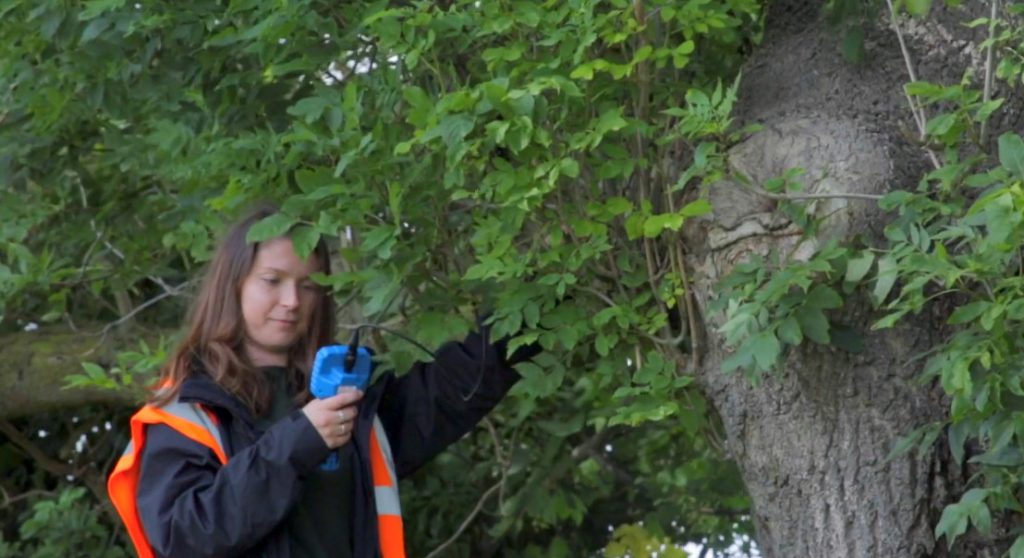Urban Trees Present Throughout Salford
Classed as both a city and metropolitan borough, Salford is a part of Greater Manchester that is decorated with cultural and historical importance. It was one of the founding industrial cities, facilitated the transport revolution, and contains the first free public library in the world. The city of Salford was also the birthplace of many famous actors, where numerous iconic bands were formed, and in recent times, it became the home of a significant part of the BBC through the arrival of MediaCityUK in Salford Quays.
Blackleach Country Park, Buile Hill Park, Clifton Country Park and RHS Garden Bridgewater are just a few of the more than 60 parks and open spaces that appear somewhere in Salford. Despite unequivocal classification as an urban part of North West England, a substantial 60% of Salford is taken up by green spaces. As for trees, an estimated 13.6% accounts for tree canopy cover, and efforts from the Manchester City of Trees project have seen around 1,500 new trees planted in Salford, with the intention of planting even more in the immediate future.
Even though Salford has a larger number of trees than expected through the presence of various green spaces, the local authority remains intent on broadening the current tree stock. Salford City Council see the array of advantages from having a wider selection of trees, but while it helps the environment and inhabitants, it has the opposite effect on development. Before a planning project on a site with trees present can continue, a developer would first need a tree survey or open themselves up to potentially catastrophic issues in the planning process.
Rules Surrounding Protected Trees
Across the country, trees are defended by specific protective measures that are designed to prevent harm from coming to them without officiated consent beforehand. For instance, if the local authorities recognised a tree or a group of trees as being worthy of safeguarding, they could initiate a tree preservation order (TPO) or a conservation area. The two options are similar, except a TPO is given to single trees and a conservation area ensures the protection of groups of trees inside a set location.
It isn’t always clear whether trees are under tree preservation orders (TPOs) or situated within conservation areas. Salford has at least 16 conservation areas and countless TPOs, but fortunately, both can be found online via the official council website. For the avoidance of doubt, however, developers would be advised to reach out for advice from a tree consultant during a form or arboricultural assessment, particularly as disrupting certain trees could lead to severe penalties, including unlimited fines or even a prison sentence.
BS5837 Surveys and Reports
Among the comprehensive range of tree survey services, a BS5837 assessment would provide the information required in a summary report to sufficiently inform planning applications. Also sometimes titled tree condition surveys or tree risk assessments, the BS 5837 tree survey would begin with an arboriculturist visiting the development site on a chosen date and reviewing all present trees before giving them a grade to assign the chosen next steps. In any situation, the arboricultural consultant will do everything possible to retain as many trees as possible. Unfortunately, however, it isn’t always possible to do this, and whenever that is the case, compensation and mitigation measures will be needed.
Tree removal and relocation inside or outside the site will happen if any trees that carry value, have a positive physiological and structural condition and are predicted to possess a long life expectancy are an unavoidable blockage to the proposed development. The least preferable outcome from a tree survey would be to destroy trees and compensate with the planting of new trees, but this would only happen if the trees in question are dead or dying, pose an unacceptable risk, have suffered tree failure, or inevitably aren’t worth keeping.
Following the British standard tree survey, a tree report will be created by the arboricultural consultants who led the assessment process. It will display a site plan with all trees included to demonstrate how they overlap with the project, other relevant data such as the root protection areas, and professional advice and practical solutions to meet the specific requirements of the local planning authority. It should then contain all of the suitable insight to help with the planning application, and if anything else is needed, the tree surveyor may suggest a tree constraints plan (TCP), tree protection plan (TPP), arboricultural impact assessment (AIA) or arboricultural method statement (AMS).
Refer to Our Arboricultural Consultancy Today
Supplying a full range of tree surveys to private clients, commercial clients and tree owners, our arboricultural consultants are available in the Salford area to provide professional advice, execute an excellent service, and contribute to planning applications. Our team are assigned to cover a specific area, making them experts on the location and the relevant local planning authorities. We also ensure that applicable laws and policies are followed, such as the regulations put in place to guarantee tree safety and protect the environment, such as the Wildlife and Countryside Act 1981.
Rather than having to decide whether you want to move forward with us straight away, Arbtech offers the option of sending clients a free quote to deliberate over. Then, if you decide to choose us as your provider of tree surveys, let us know, and we can choose a date to send arboricultural consultants to your site in the Salford area and begin the process of informing your application for planning permission. All you need to do is get in touch by visiting the contact section of our website, email us, call us or fill out a quick quote form, and we can get to work with conducting a tree survey for your project.


